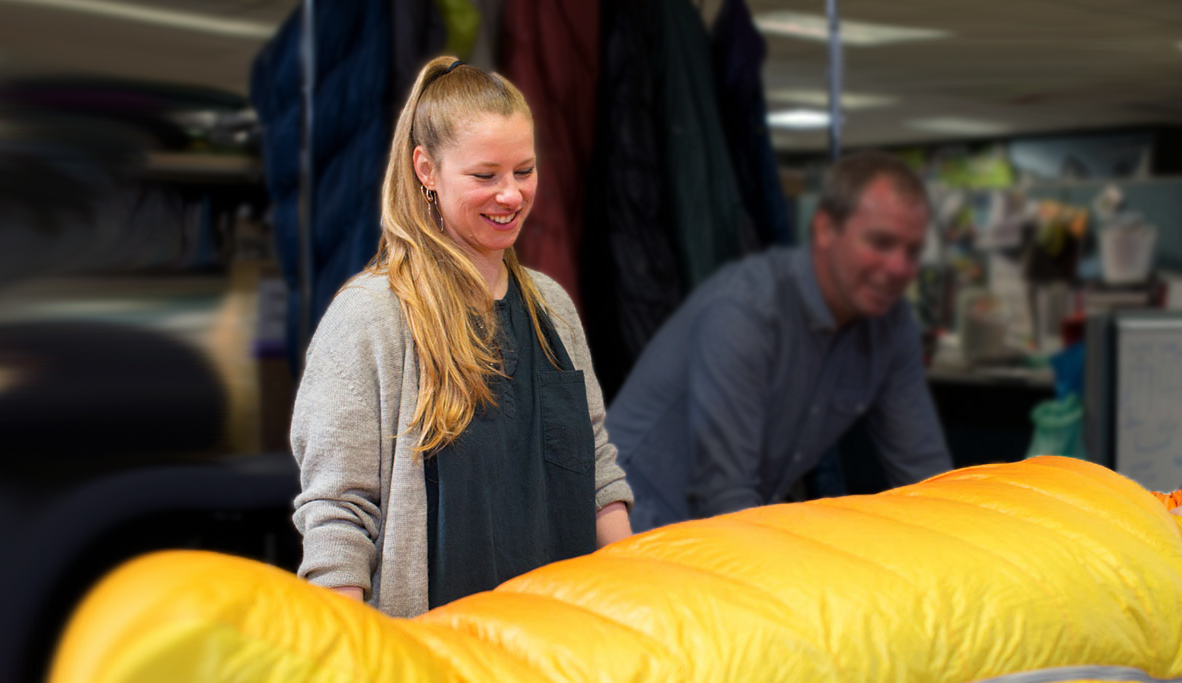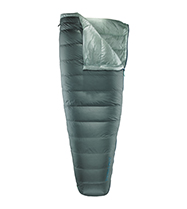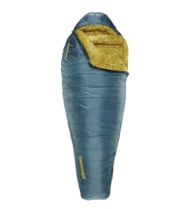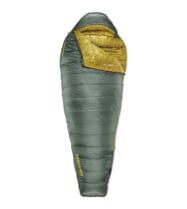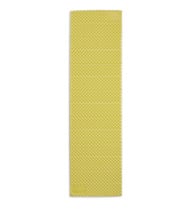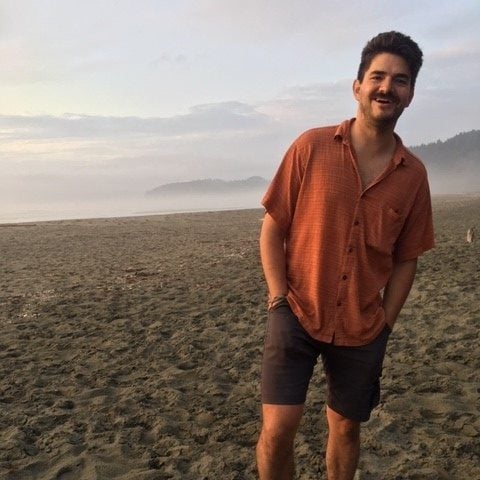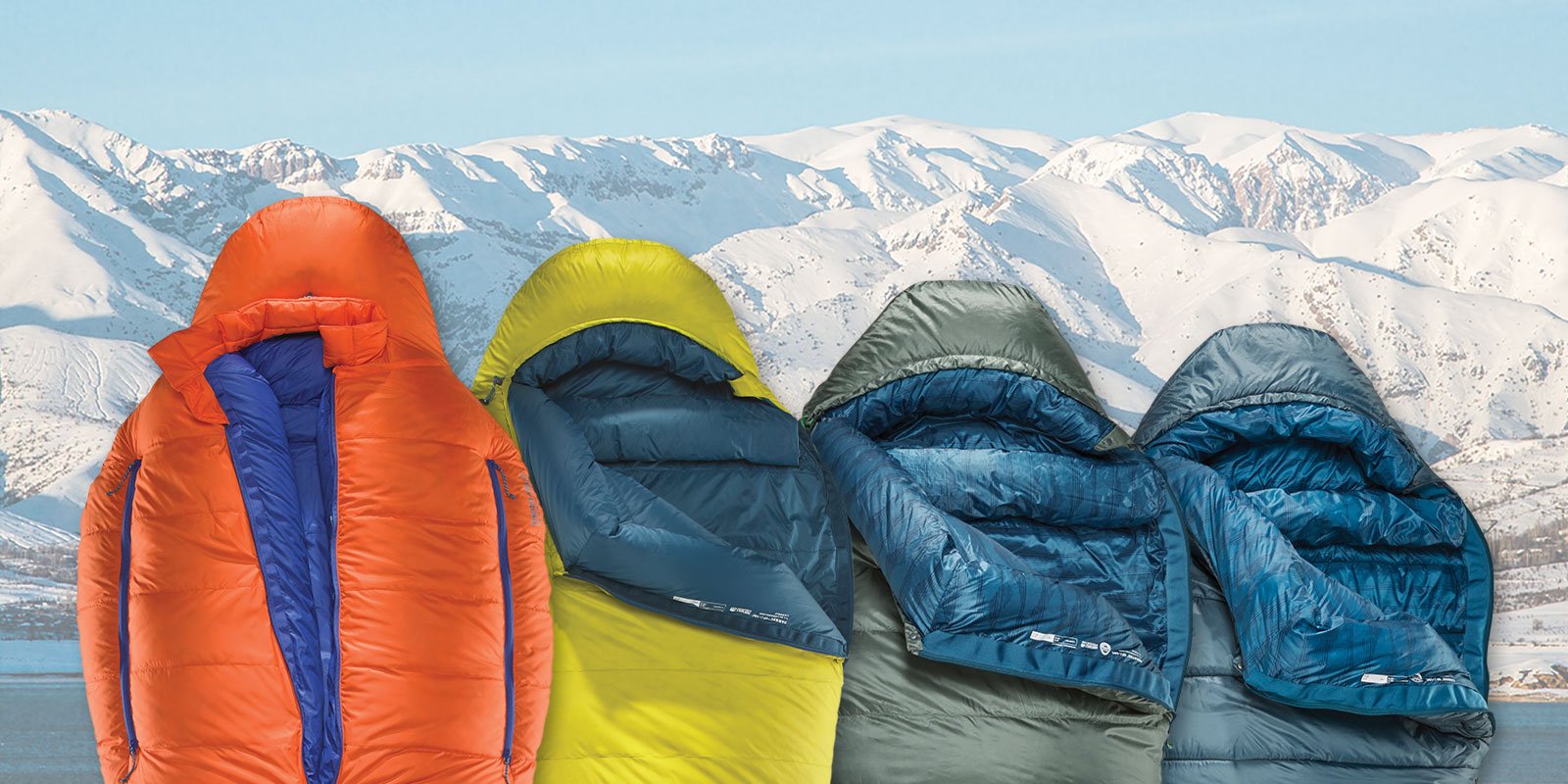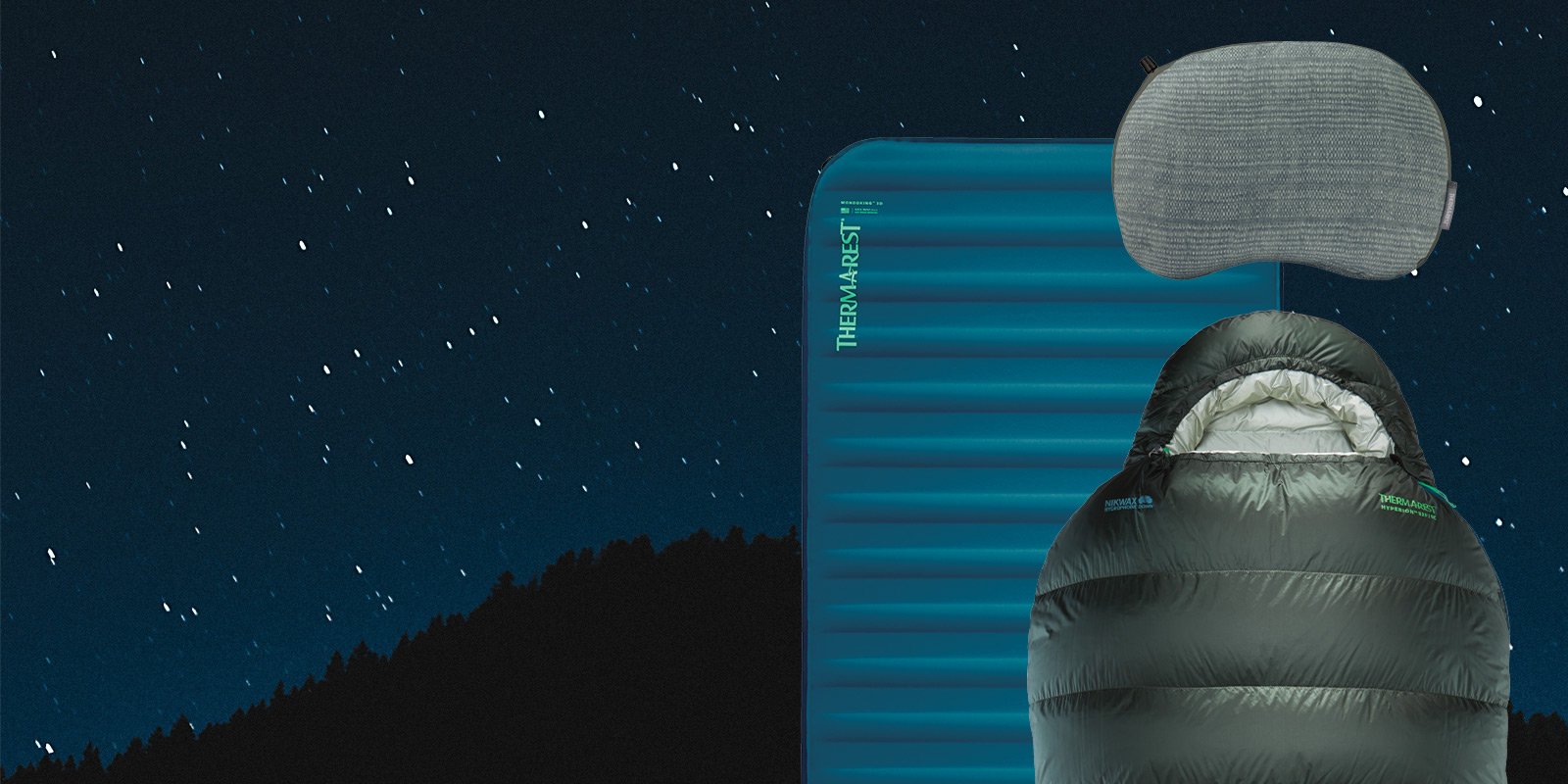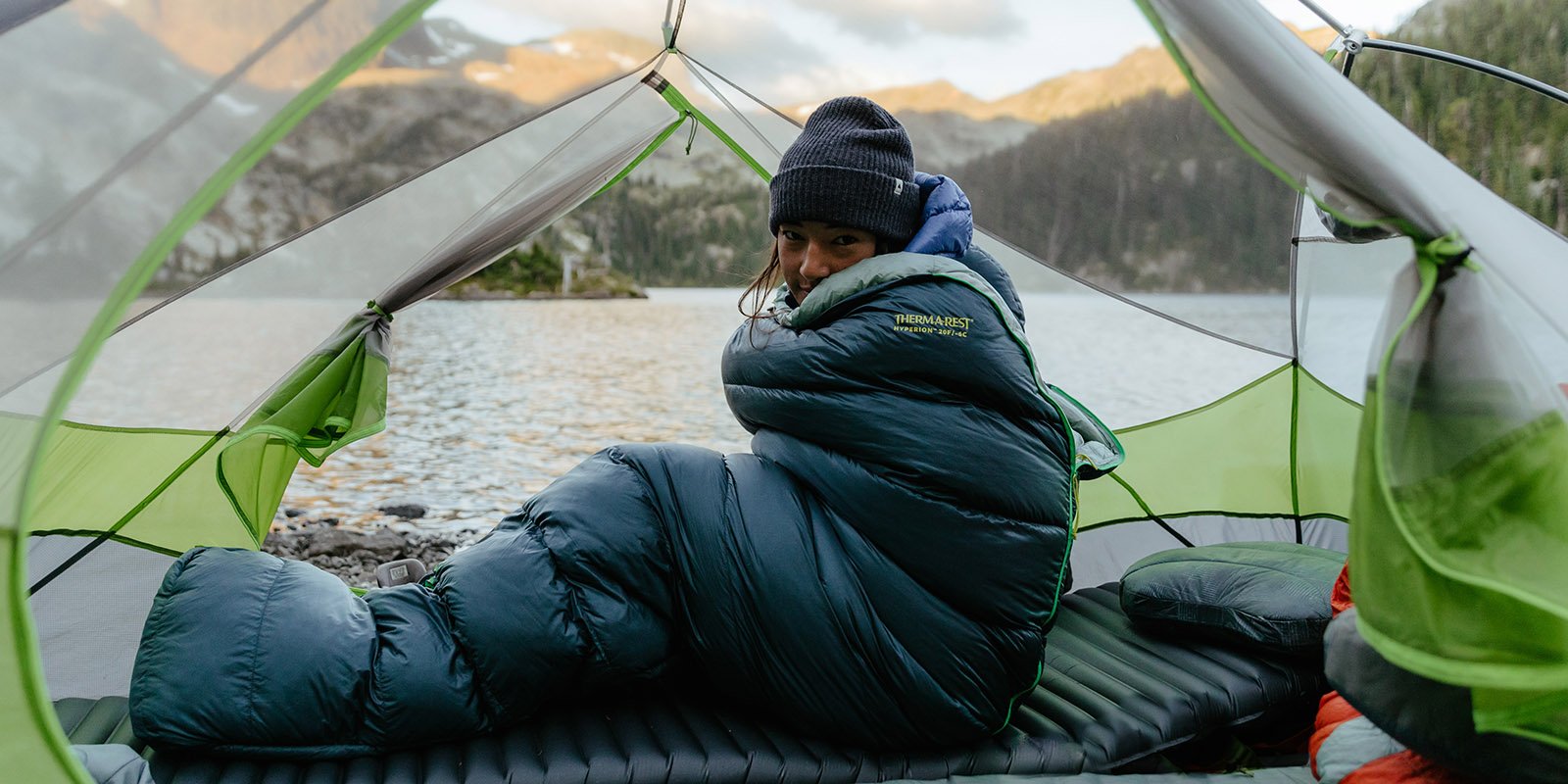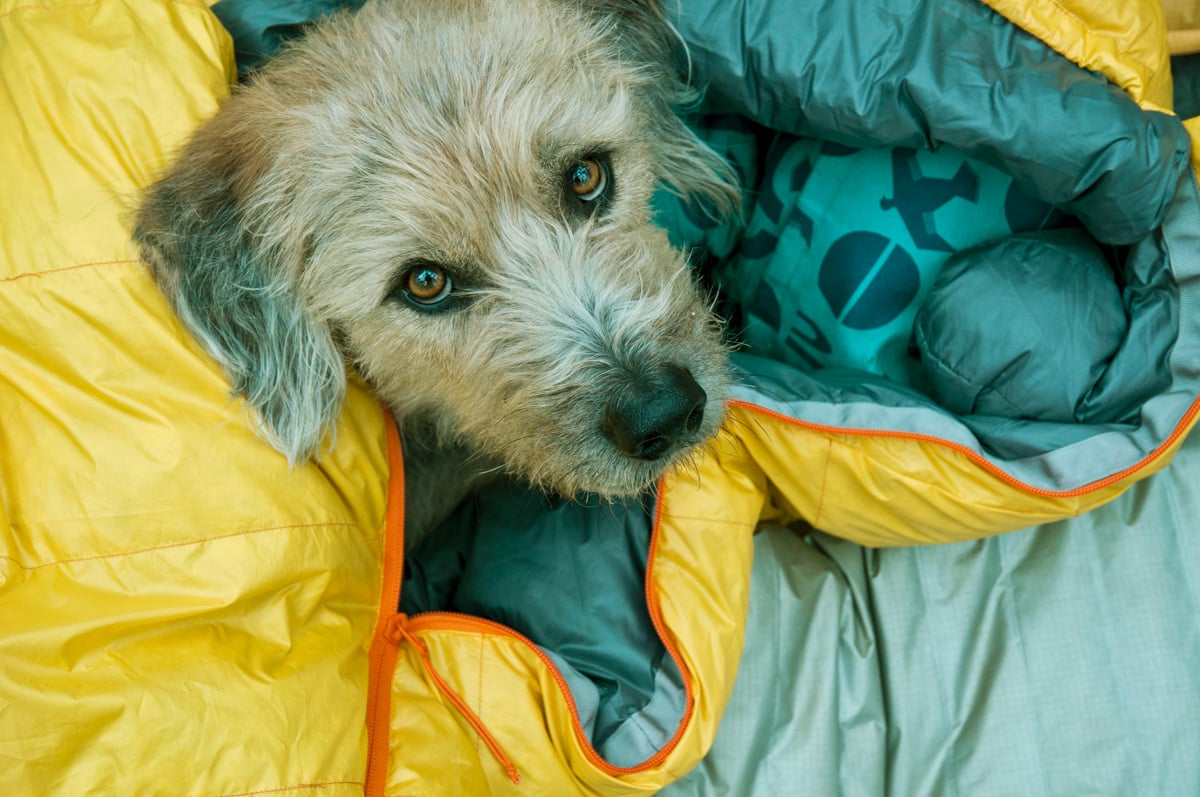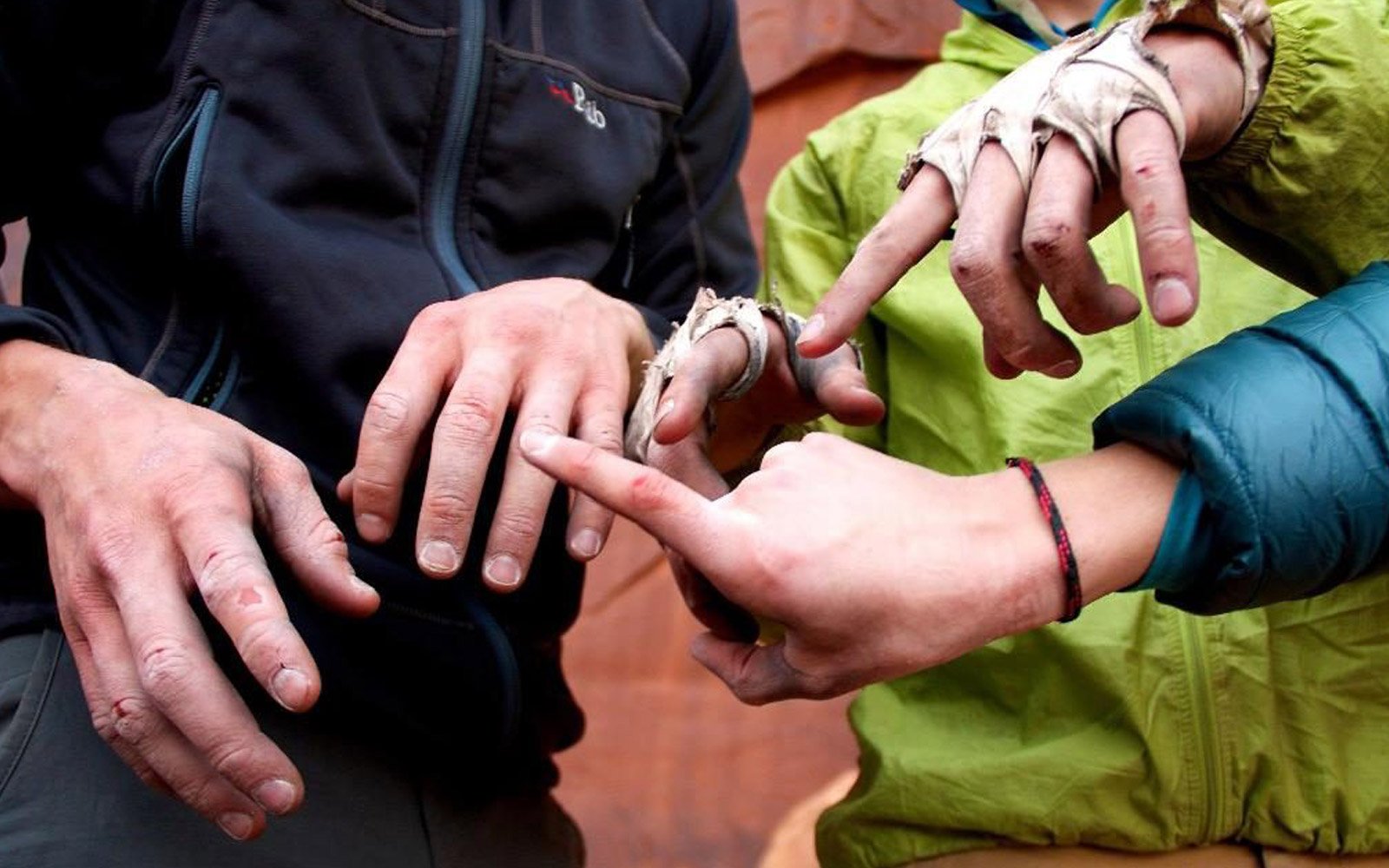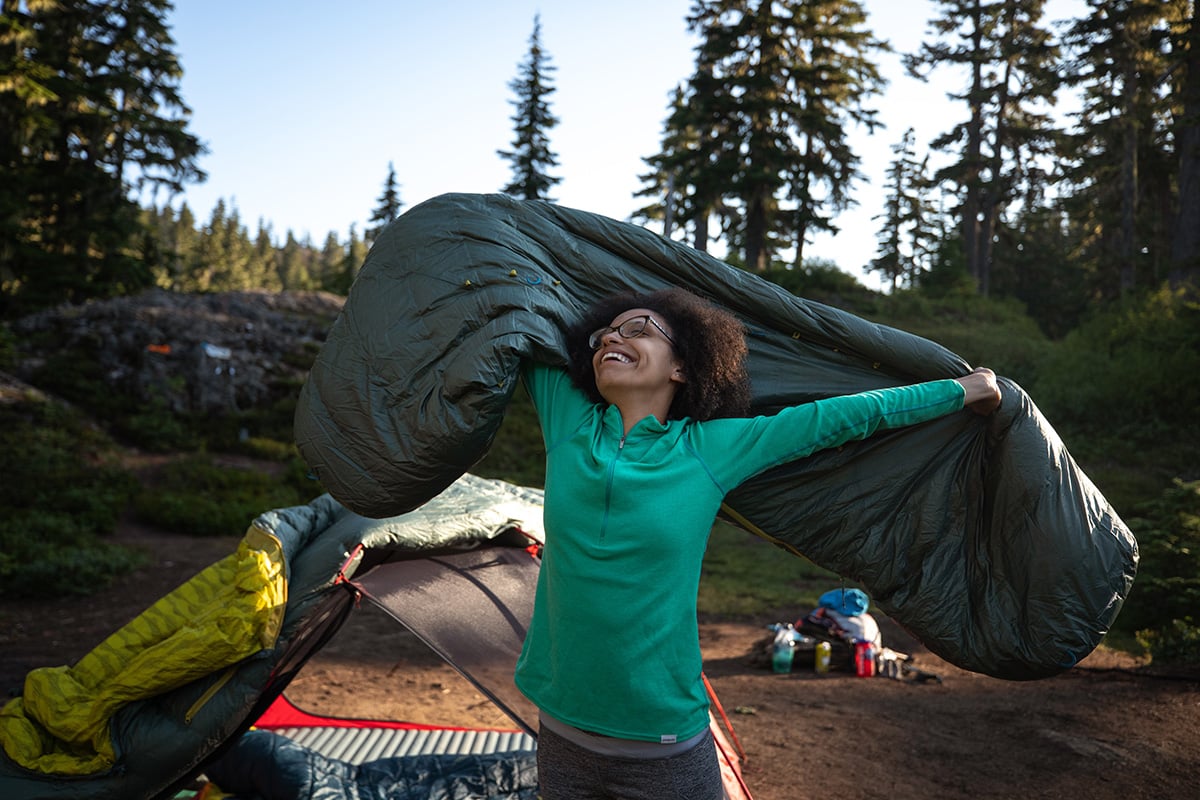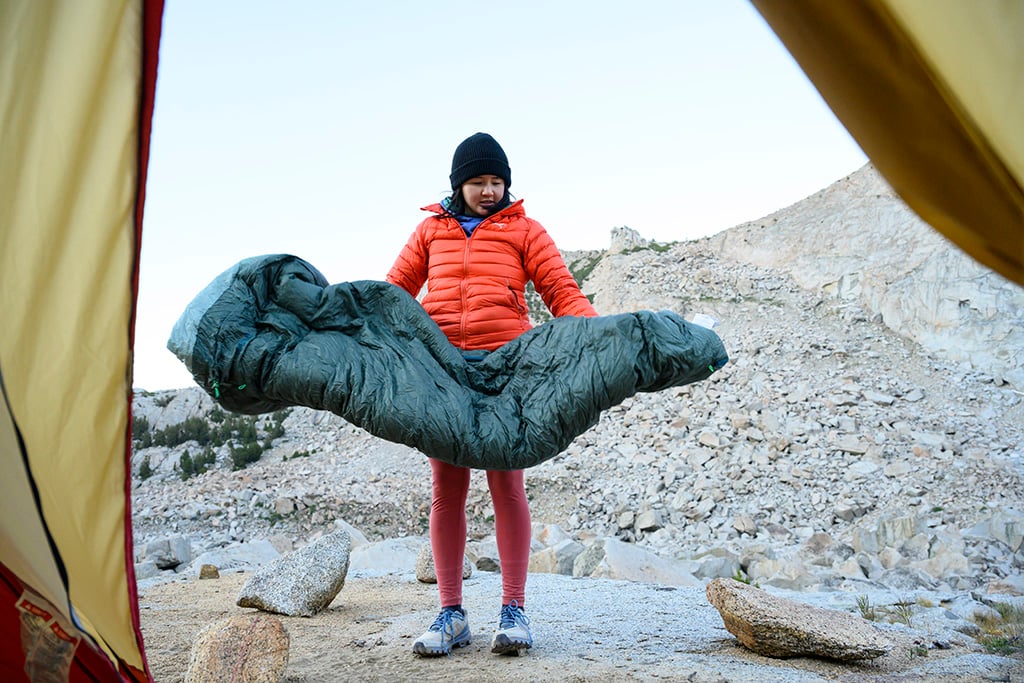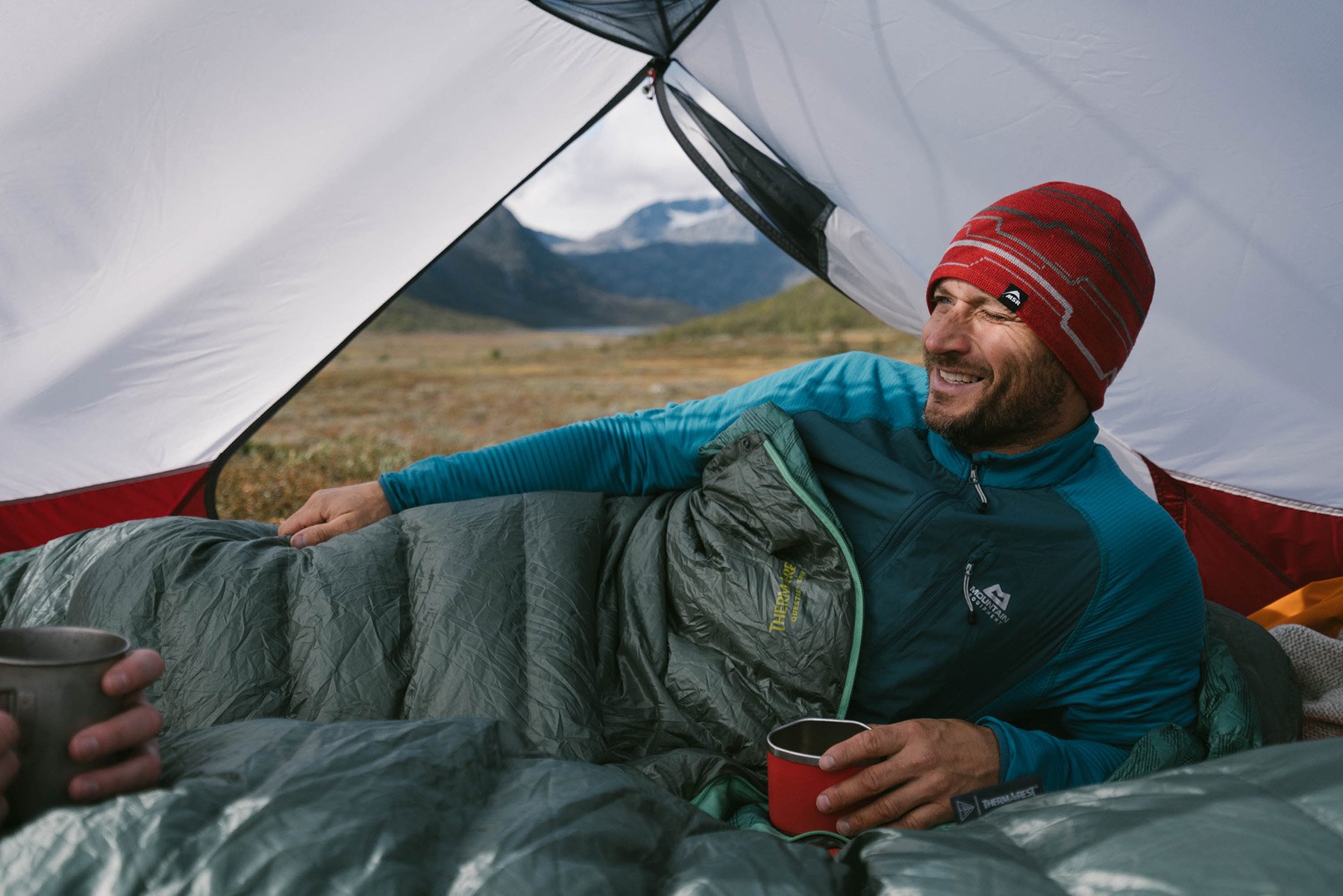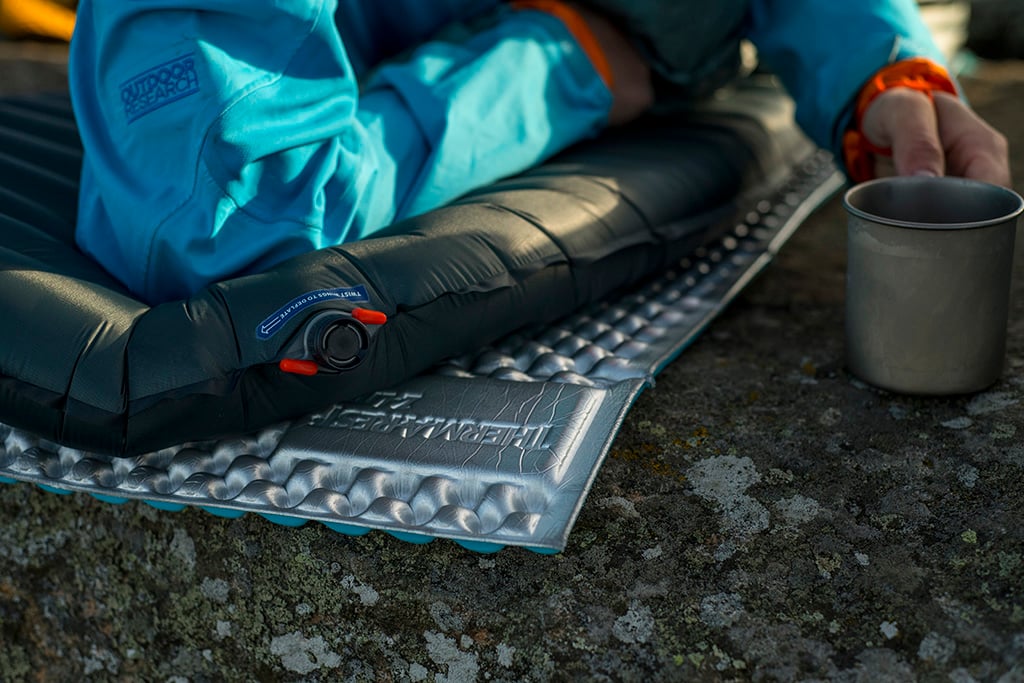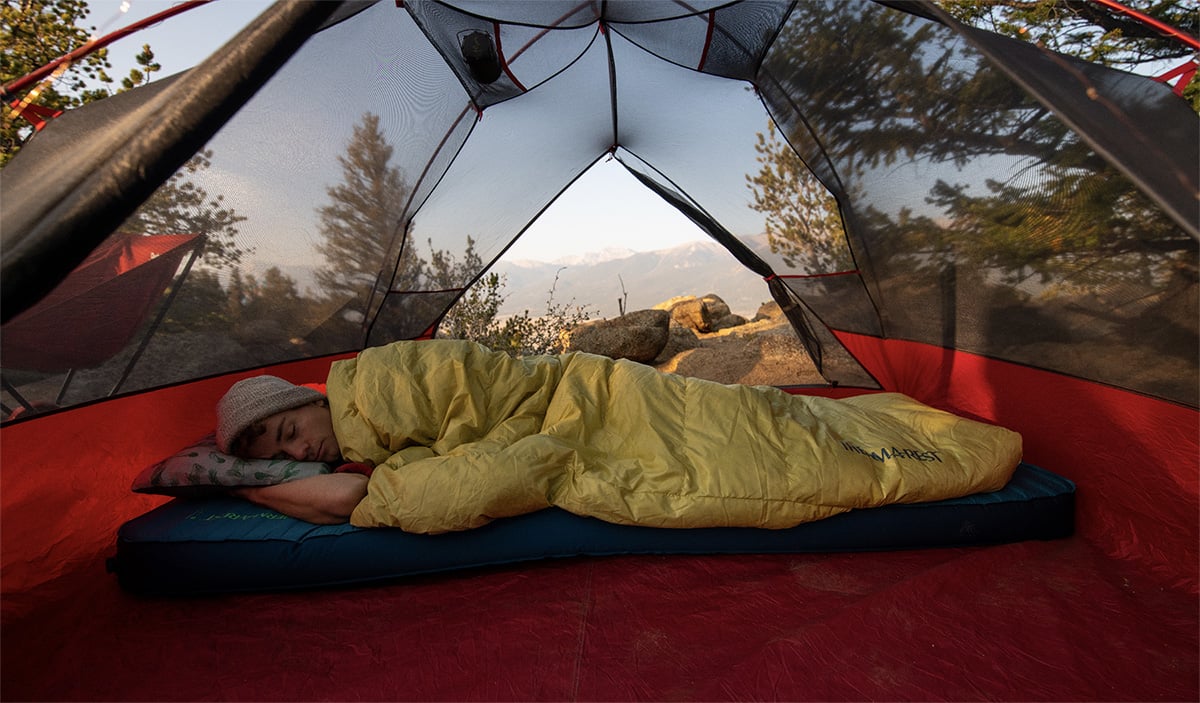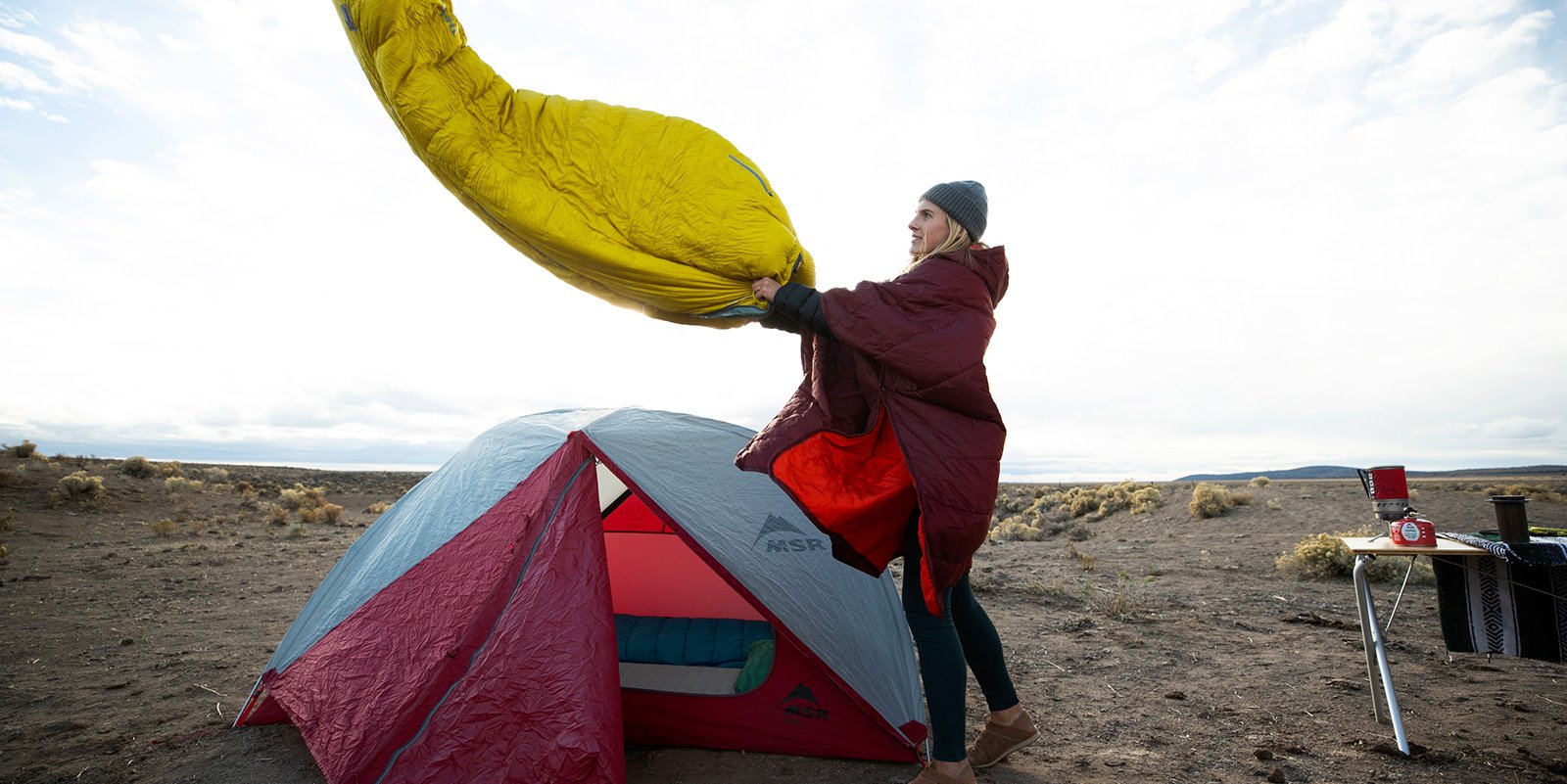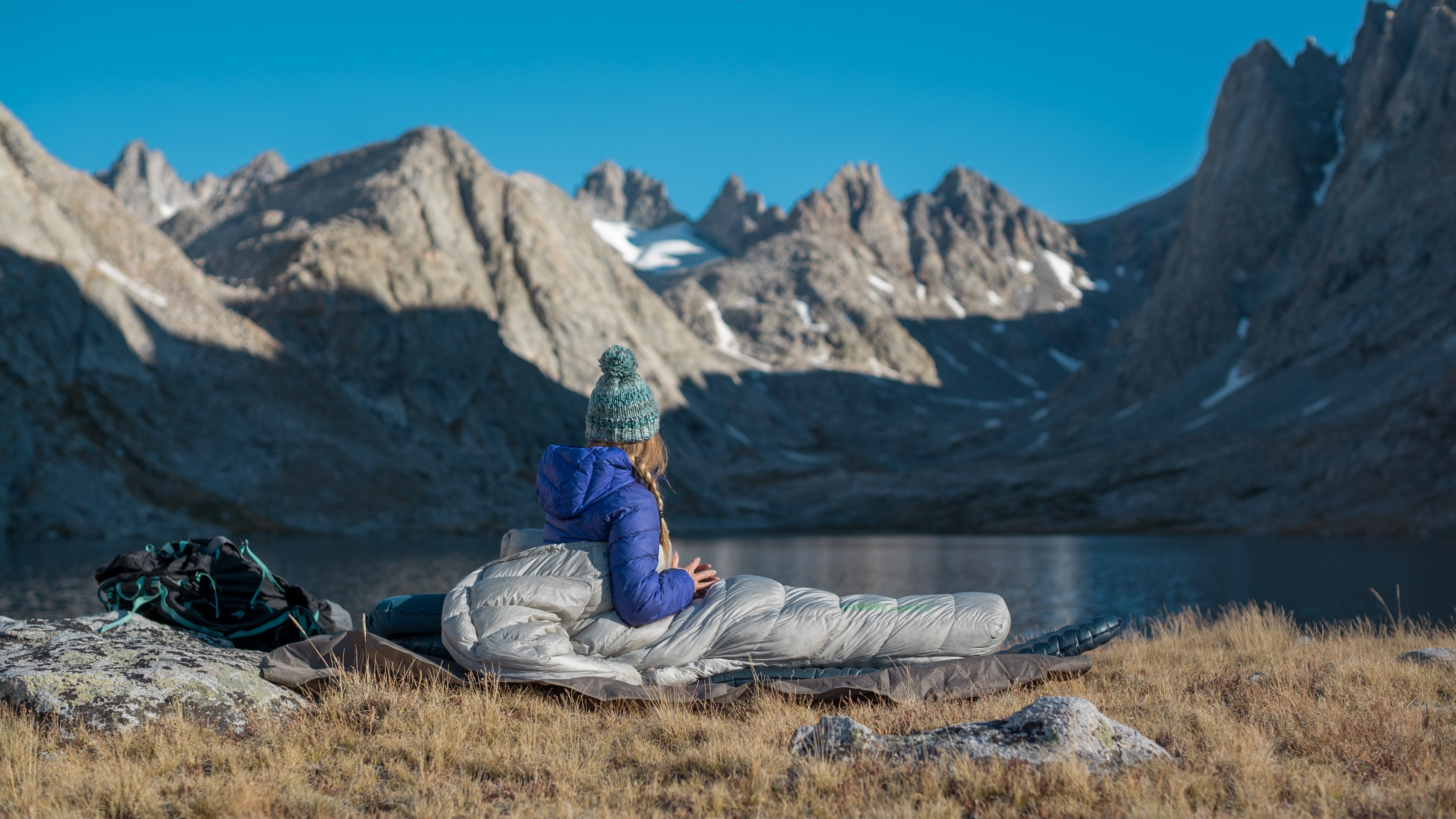We interviewed Katie Nash, the resident textile expert at Therm-a-Rest’s parent company, Cascade Designs. For 10 years she has been an integral part of all things fabric around here, from MSR® tents to the 2022 update of 100% recycled fabric in some of our best sleeping bag designs. We talk to her about what it means to innovate, why proper fit is so important and much more. Enjoy!
Will you please tell us your name and current position at Cascade Designs?
My name is Katie Nash and I am a Soft Goods Designer at Cascade Designs. Which means I deal in all the things that are fabric and sewn.
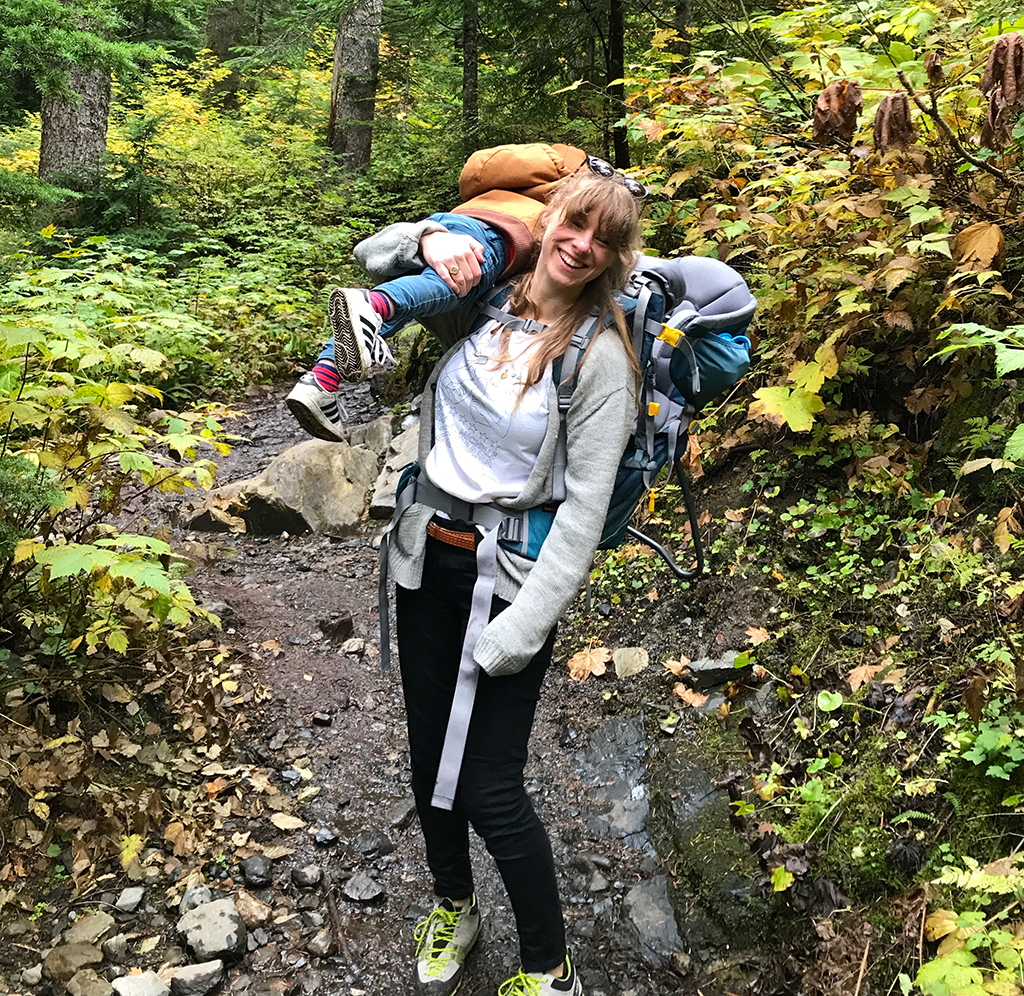
How long have you been with Cascade Designs and in what role did you start?
I’ve been with Cascade Designs for 10 years. I started off as a contractor, just sewing some samples, doing some patternmaking and stuff. Then they hired me on as a long-term contractor, where I was working with a bunch of different products.
It was a while before I was working on any Therm-a-Rest products, but then I was assigned to Therm-a-Rest about 7 years ago, and have been working on Therm-a-Rest almost exclusively since.
What was your first ever experience with a Therm-a-Rest product?
I believe it was a Z Lite™; I got it in high school. When I went to college in western Massachusetts, sometimes I would just take my Z Lite and my little synthetic 20-degree sleeping bag and walk up into the hills and just sleep on snow, uh, until I woke up with the sun and went to class in the morning. And it wasn’t warm…enough. I mean the Z Lite is good, but not that good! I was 18, and a little more confident than I should have been.
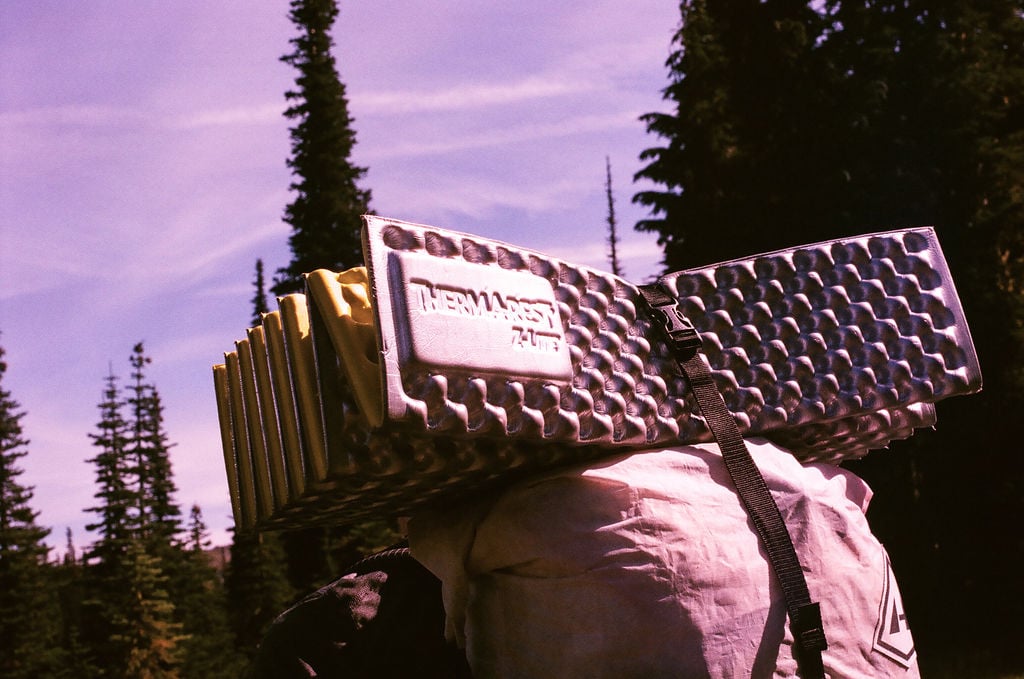
Therm-a-Rest isn’t quite as renowned for their sleeping bags as we are for our pads, yet we have been making them since 1994. In your own words, what sets Therm-a-Rest sleeping bags and quilts apart from the competition?
Therm-a-Rest has always been about innovation and new technologies, and in the 90’s we were doing some “weird” stuff for the times. Some of it probably didn’t need to end up in the marketplace, but some of it was really cool. A good example is quilts, which we were doing a long time ago, because we had some hardcore, dedicated users who knew that a quilt was a really great lightweight solution.
We’ve consistently been early, a little bit niche and sometimes a little bit weird and experimental. We realized though, that we needed to put out some really solid and understandable product, which may then help lead users to that niche that they didn’t know of, and couldn’t find elsewhere.
The whole time though, Therm-a-Rest has always striven for using the best materials and the best technology that we could afford, and would become a good investment for our customers.
Another aspect of it, and this is something I have focused on a lot in my time here, is the actual fit of the bags. If you’re just looking at specs, you may look at a bag and see that a certain sleeping bag is really light—lighter than the others you’re looking at! Then you get inside the bag and it’s a nightmare! Like it’s so tight in the legs and really uncomfortable. So, I have tried to be really conscious about the fit.
I would say that my garment training has been very helpful with that, because I could figure out where to pinch out a little bit here or add just enough there, so that the end result is a really pleasant experience for the user.
I want to go back to what you were saying about high-quality materials, as you are the resident textile expert. In today’s competitive landscape, how does Therm-a-Rest maintain quality, especially given how the COVID pandemic has affected supply chains?
I would say, that we have a collection of materials that have been thoroughly tested and vetted, and they do the job we need them to do. Such as having the hand-feel we are going after and the right weight profile. It’s a nice consistent assortment of materials that we have been using for a long time.
We have been working with the suppliers of these materials for a long time, we have good relationships with them, and they have been listening to us ask for sustainable alternatives all along. They are now starting to come out with recycled content versions of those same materials, which is exciting.
Recycled is tricky though—especially with nylon. There’s a global shortage of nylon.
We’ve certainly seen an increased customer demand for sustainable materials, and with it more pressure on us and our suppliers to make them available, right?
Yes! And personally, I want that too. As a human and user of the products I want that very badly. I listen to the consumers and the global conversations that are happening, and they align with what I want as individual as well.
For a long time, it’s been every year, every season, we ask like, “How are you coming along with that PFC-free DWR? Is it ready? No? Yeah, didn’t think so.” But we want it, and we really are getting better and better results from the pressure I put on the materials developers.
That’s a nice segue into my next question regarding innovation. Therm-a-Rest has always been about innovation, and currently you play a key role in driving it at Therm-a-Rest. How do you do it? How does innovation happen on a day-to-day level?
It starts with a lot of conversation. A lot of blue sky ‘what ifs’. What if it could be like this or that? Don’t you wish it could have the hand-feel of this material and it was lightweight like that material…
I think for sleeping pads we have a little less room for creativity with materials, coatings and stuff. For sleeping pads, the materials are everything, because they have to weld and hold air, right? With sleeping bags, you have a lot more flexibility with how something is sewn and how something is constructed. You don’t have to build half million-dollar machinery to make a new design, so you can try a lot of wacky ideas just to see what floats to the top.
Which is how some of our products have come about. For example, someone was going to their child’s soccer game and was complaining that she was going to be cold. So, someone here at Therm-a-Rest cut a blanket out and slapped a hood on it. And it ended up becoming the Honcho Poncho™. Quick on-the-go solutions. Like, “I know how to solve this problem!”
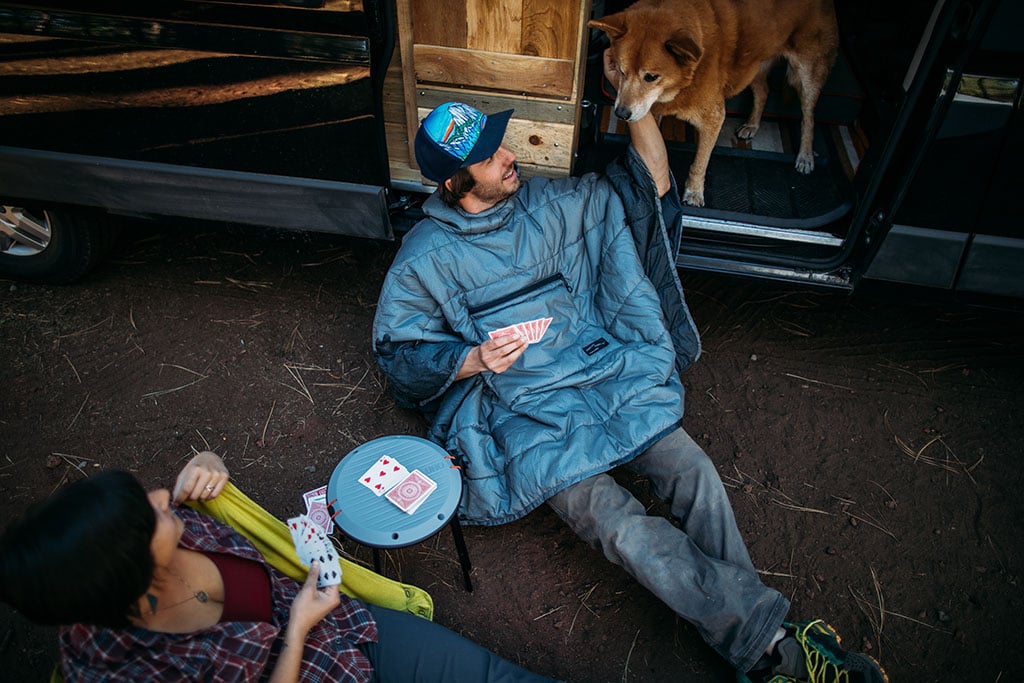
That’s a fun way to look at innovation. That it’s not so rigid and deliberate. It’s more open-ended, sandbox style.
It’s nice with softgoods too, because you have a good relationship with your supplier and you want to bring them along. They’re excited to try new things too! I don’t think they really just want to keep working in rectangles. They want to be in on the action as well. So if you have a good partnership with your suppliers, they will entertain your wackiest ideas.
Can you speak to some of those partnerships? What do we value in a supplier and how have those relationships enabled us to do what we do over the past 50 years?
I would say for some of our more innovative or experimental products, it has helped to have a specific supplier we work with that is really willing to work with some “boutique” level business. They are great sewers.
Like when we were working on some quilts, I was working with two suppliers. One of the suppliers totally understood what the quilt was for—they really got the concept. And the other supplier literally didn’t understand what the quilt was; they didn’t understand how it was getting used. It was a factory that I very much appreciate and have done good work with, but it was helpful to have a supplier of the raw materials truly understand the context of how the user was going to be interacting with the product.
It’s interesting. I think, before the pandemic, at a lot of companies the designers were going to Asia all the time to visit raw materials factories. But because I have this nice productive relationship with our suppliers, I haven’t had to travel to Asia to do my work. I’ve been able to do it all through email and samples.
There’s just literal trust, mutual understanding and we communicate well. You know, a good relationship! I’ve been happy I haven’t had to jump on a plane and use all that fuel multiple times. You know, I’ve lived in Asia, I lived in Taiwan, and I love it, but I’ve never had to go there for work and I’m happy about that!
So, you have been here for 10 years, Therm-a-Rest has been around for 50. This specific supplier you have been referencing, were they around when you got here and you took upon the relationship?
I believe we have been working with them since the beginning of our sleeping bag venture. Which matters, it takes time to build that level of quality in a working relationship. Some newer companies might struggle with that early on, and have to be flying to Asia all the time.
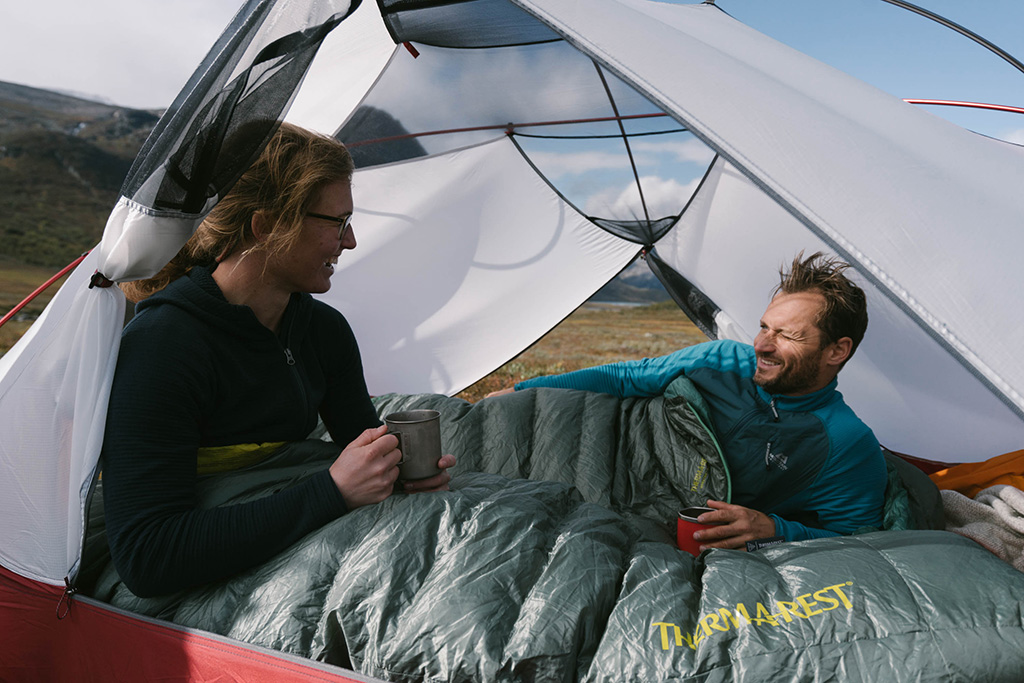
How long has Therm-a-Rest been doing unisex sleeping bags, and what were the reasons behind it?
It started when we launched that Questar™ and the new Saros™—which we had re-designed to be like a synthetic option of the Questar. Before that we had men’s and women’s bags, and I would say it wasn’t a very modern approach to serving all of our customers. Like maybe women’s bags were pink, and small and warmer compared to the men’s bags which had different temperatures.
One benefit of it was instead of having a men’s bag in two sizes and women’s bag in two sizes, which is four distinct products, you could just have three total with a unisex approach. One model and three sizes: small, regular, long.
The reason I didn’t think it was necessary to have it gendered anymore has to do with what we know about sleeping bags and their efficiency. It’s not about your sex, it’s about your size. The bag has to fit you properly.
One thing I did pull from the women’s bags before was the Toe-asis™ Foot Warmer Pocket. A lot of women will complain about cold feet, so I was like I don’t want to hear anybody complain about cold feet, so I’m going to slap that Toe-asis in the new bags.
We still had to make sure the bags were totally warm enough though, and this is where all our testing and our on-site cold chamber became really important. Because the women’s bags were rated 5 degrees warmer. But the way sleeping bags work, if it actually fits, is the right size and actually meets the temperature rating, then that’s all you need.
You said “modern” approach, but I feel safe in thinking you could have said “inclusive.” You also said we cut four different products down to three, which is also more sustainable, right?
Yep, absolutely. I’m glad you asked this question. We’re seeing a shift in the industry, thanks to companies like REI, that drive a lot innovation with their influence. They simply won’t sell products if they don’t meet certain criteria, and are driving this question of what men’s and women’s actually is. Which I really like about REI, because you know what, I’ve been over here saying that for a long time now!
Well now we have you on record saying it!
Thank you! That said, there are smaller humans who like pink, purple and teal. That’s totally true. But I’ve experienced it as a consumer myself, where say I’m shopping for trail runners, and really like the shoe but I want the men’s colorway, it’s a dope colorway, but I’m cut out by like a half size or something.
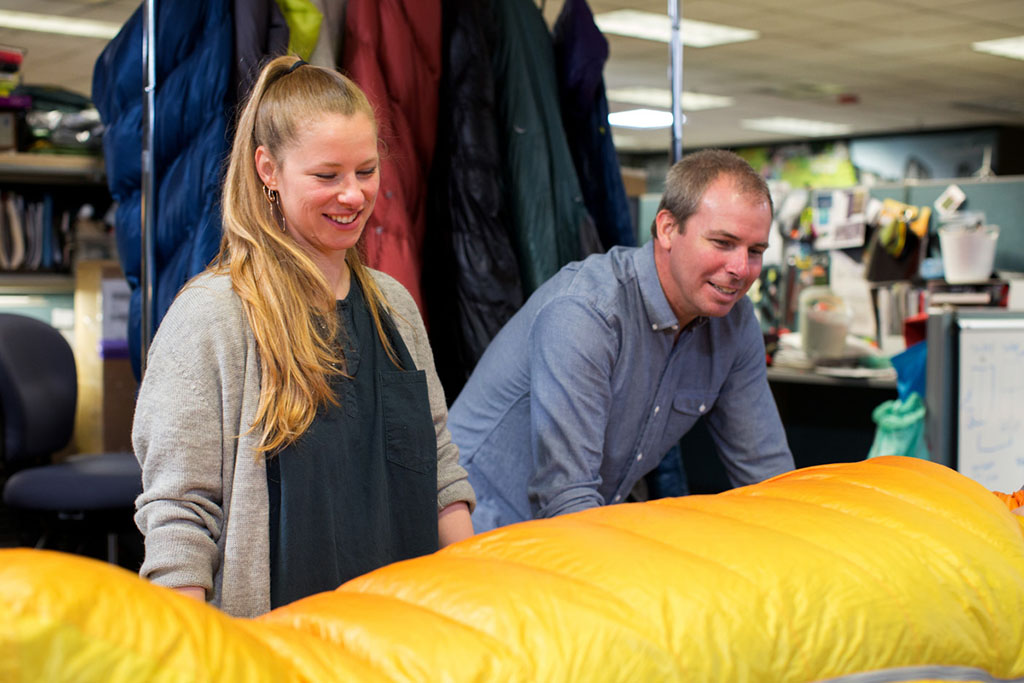
I have one more question for you: What has been your favorite project you have worked on for Therm-a-Rest?
So there’s a series that I loved working on, and then there’s this other ongoing work that I really love doing. The series was the ultralight sleeping bags and quilts. That was really fun because we are working with premium materials and you didn’t have to compromise on things like 900-fill down and the 10-denier nylon—which really has a nice hand-feel actually. The ultralights include some of those wacky ideas I was talking about, like the Ohm™, which is one of my favorite products.
Me too, I love the Ohm! It’s my go-to.
It’s one of those daydreamed, super versatile products. It’s really compact and really lightweight. You can use it as a quilt or a normal very comfy semi-rectangular sleeping bag, and even zip it together with another Ohm for a two-person bag. It’s brilliant.
Anyway, it’s one of those products that’s really about fit. Way before I got in the outdoor industry I worked in foundations, women’s foundations pieces. I was a bra designer. In that work, every, like, eighth of an inch matters! So getting into that ultralight series, with aggressive target weights and tiny details, I was able to get back into that space where I was like, “a quarter inch here, and pull out four feathers here…” It became my baby, it was a lot of fun, and I’m really proud.
You mentioned there were two parts to your answer…
The other thing I get to do is all the print and color stuff, and that’s just fun. There’s just a little more play there, especially has it pertains to our pillows and blankets. They don’t have to be as serious and dialed as the sleeping bags so to speak, so you can look at what’s happening in the world, what’s happening culturally and craft some new prints, colors and designs in response. It’s interesting and fun.
Well, thank you for your time Katie, and thank you for your 10 years of expertise!
No problem!
Related Posts:
